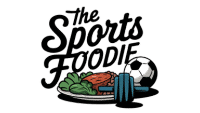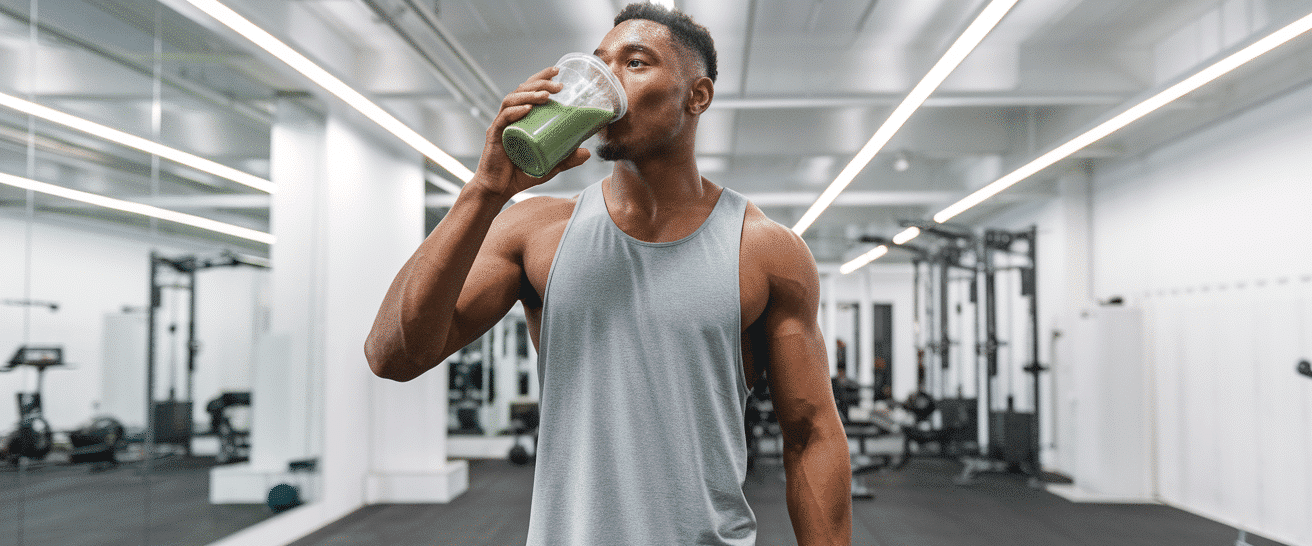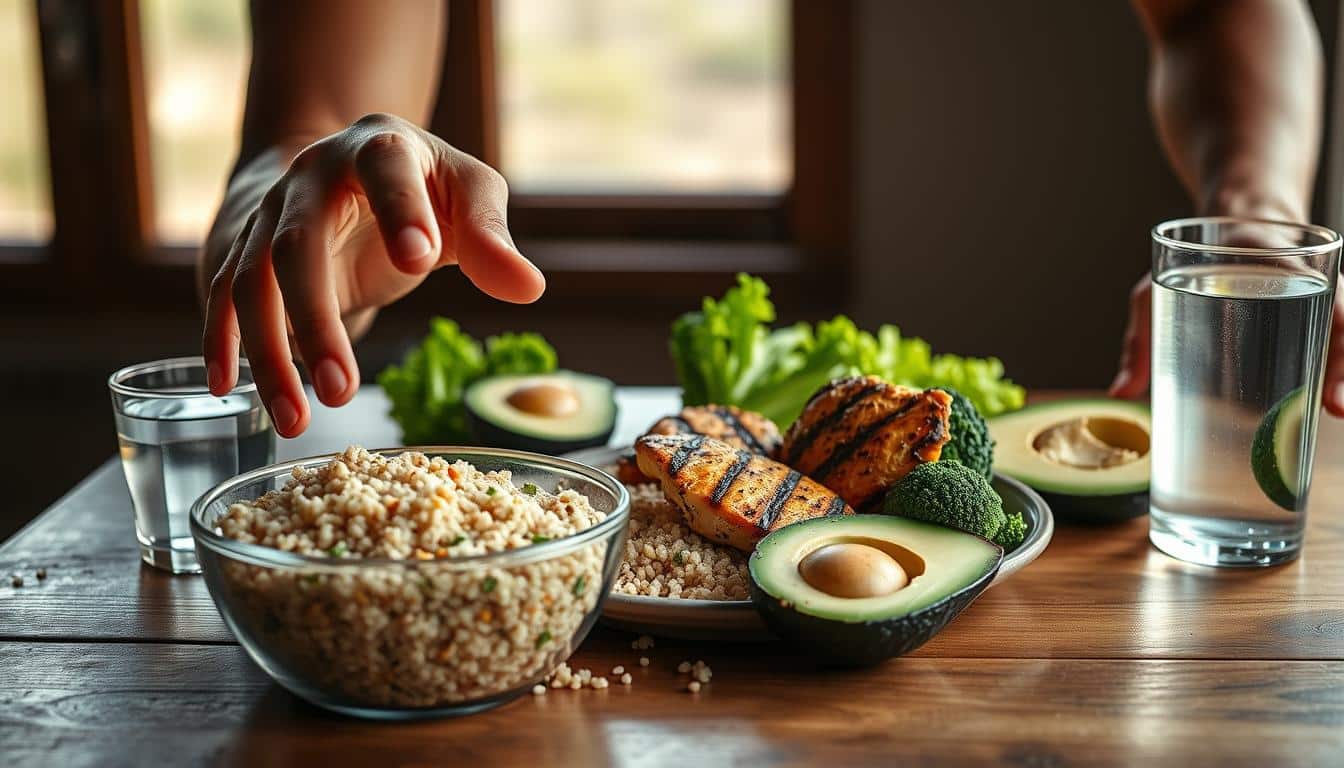Surprising fact: a high school girl training an hour may need about 2,000 calories, while a tall pro can require 6,000–7,000 calories a day.
You move, jump, sprint, and decide fast. That demands steady energy and smart nutrition. I built this guide to help you match diet to training load and feel strong for every game.
Competitive male athletes training over 90 minutes should aim for more than 23 calories per pound. Female athletes training the same time should target 20–23 per pound. Hydration matters too: drink well before, sip during, and replace fluid after.
What you get here: clear calorie targets, simple food ideas, timing tips for energy and recovery, and hydration rules to avoid cramps. Use data-backed steps to improve health and on-court performance.
Understand a basketball player’s energy needs today
Your daily energy needs change with size, time on court, and how hard you train. Use clear targets so you eat for performance, not guesswork.
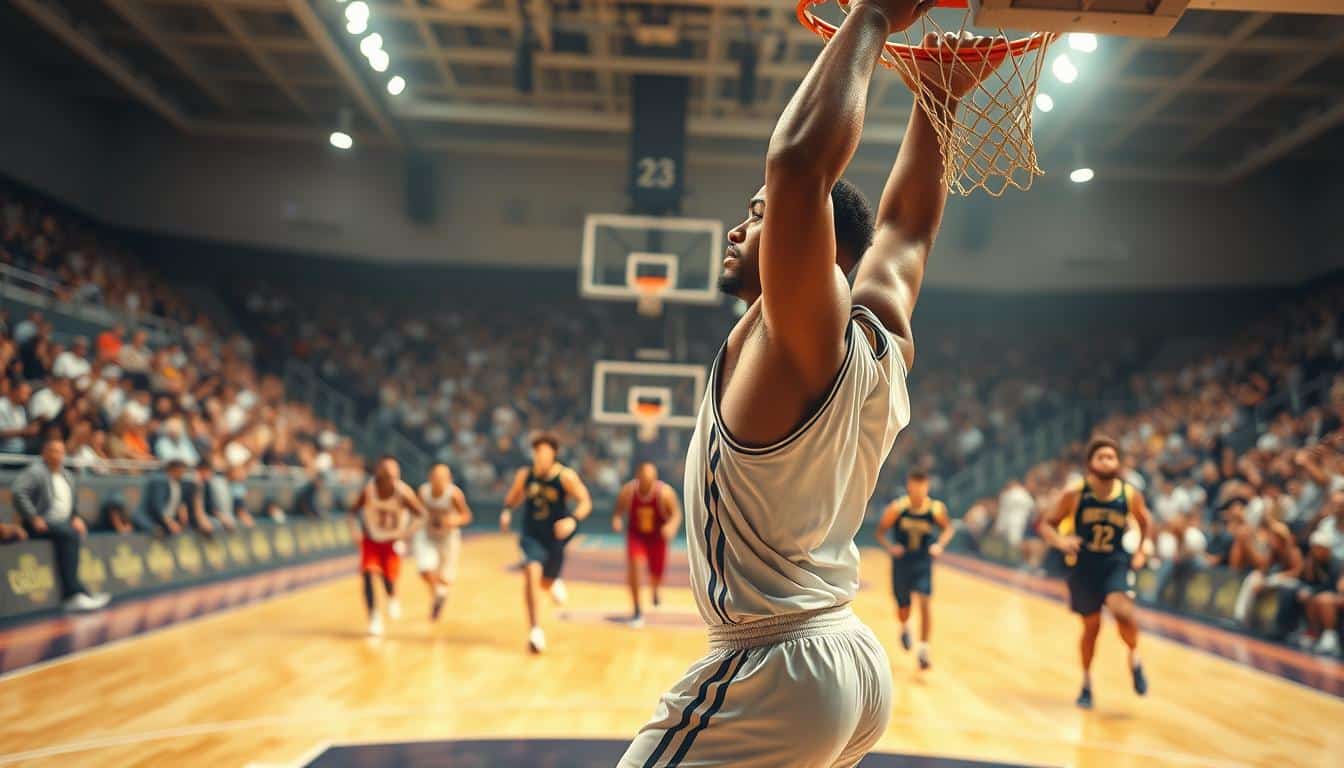
Start with two real anchors: a high school girl practicing one hour needs about 2,000 calories. A tall pro can need 6,000–7,000 calories per day.
- Estimate calories from training time, body weight, and game schedule.
- Use calories per pound to scale targets with weight.
- Increase intake on double sessions; reduce on rest days.
- Track morning weight and energy to confirm per day needs.
| Group | Training time | Calories per pound | Daily fluid |
|---|---|---|---|
| Competitive males | 90+ minutes | >23 cal/lb | ~3.0 L/day |
| Competitive females | 90+ minutes | 20–23 cal/lb | ~2.2 L/day |
| Light training | <60 minutes | Adjust downward | Maintain hydration |
Set macro goals that match your game and workout
Aim macros at real training needs so your body has the fuel and tools to perform.
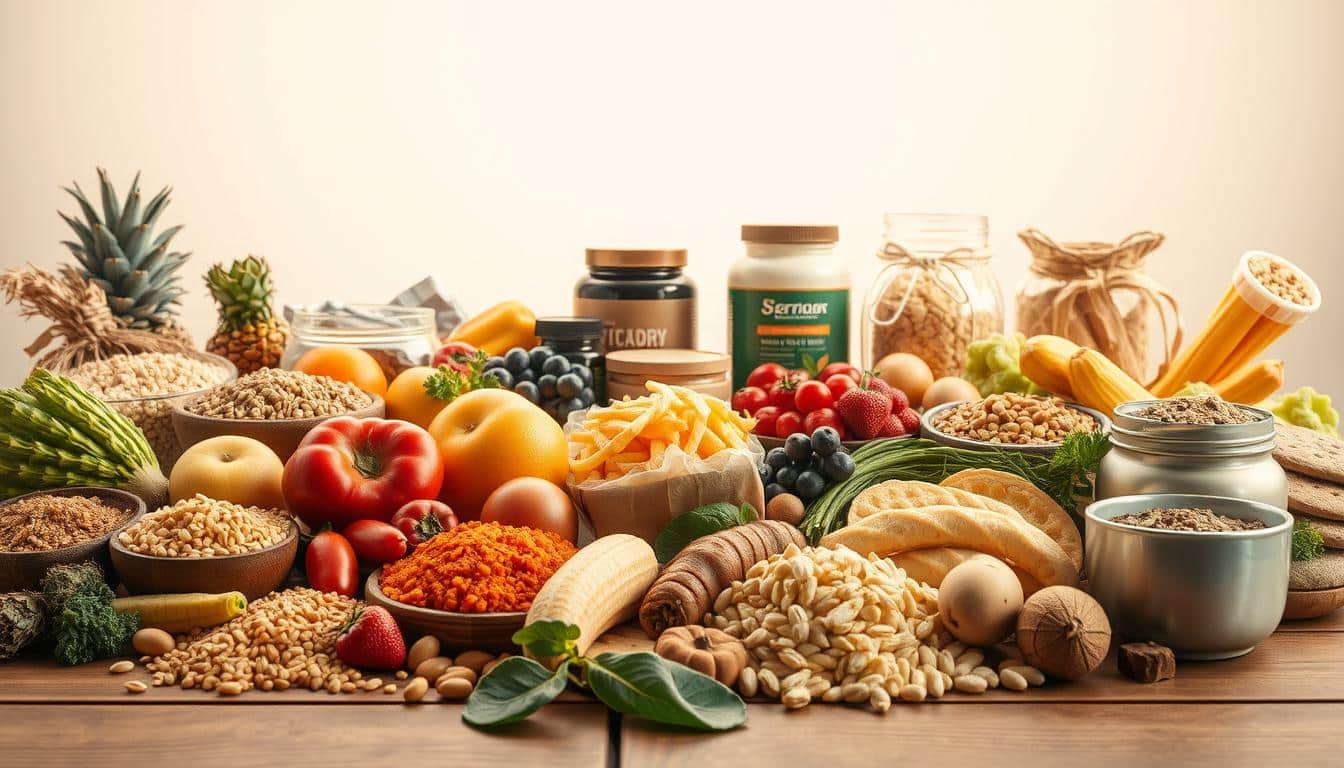
Carbohydrates: grams per kilogram and best sources
You set carbohydrates at 5–7 g/kg to support endurance-style demands and steady energy during long practices.
- Targets: 5–7 g/kg body weight per day.
- Choose whole grains, fruits, legumes, and starchy vegetables for steady fuel and fiber.
Protein: grams per kilogram and lean options
Set protein at 1.2–2.0 g/kg daily so muscles repair and grow after hard work.
- Targets: 1.2–2.0 g/kg per day.
- Lean options: chicken, turkey, fish, eggs, dairy, tofu, and legumes.
Fats: percent of calories and healthy choices
Keep fats at 20–35% of total calories to support hormones and longer bursts of effort.
- Targets: 20–35% of daily calories from fats.
- Good sources: olive oil, nuts, seeds, avocado, and fatty fish for omega-3s.
Micronutrients that support muscle and energy
Include B vitamins for energy production and vitamin D for bone support.
Cover calcium, magnesium, potassium, and iron to help muscle function and oxygen delivery.
Match these macro goals to daily needs and review energy, recovery, and performance regularly. For a deeper read on how nutrition affects performance, see this practical guide.
| Macro | Target | Quick sources |
|---|---|---|
| Carbs | 5–7 g/kg | Whole grains, fruits, legumes, starchy vegetables |
| Protein | 1.2–2.0 g/kg | Chicken, fish, eggs, dairy, tofu, legumes |
| Fats | 20–35% calories | Olive oil, nuts, seeds, avocado, fatty fish |
Time your meals for training, game day, and recovery
Timing turns food into usable energy. Eat predictable, simple foods so your body performs when you need it most.
Pre-session: 3–4 hours before
Eat a carb-rich plate with moderate protein. Keep fats and fiber low so your stomach stays calm during the game.
Examples: rice with lean turkey, oatmeal with banana and yogurt, or pasta with tomato and grilled fish.
Last-hour fuel: 30–60 minutes out
Choose easy carbs that digest fast. Think banana, rice cakes, or a granola bar.
These snacks top off glycogen and sharpen energy without weighing you down.
Halftime and timeouts
Sip 7–10 oz of fluids every 10–20 minutes while on the court. Use sports drinks in long or hot sessions for electrolytes.
At halftime, take quick carbs (chews, fruit pieces, or an energy gel) plus electrolyte sips to keep focus and legs strong.
Post-session window: within two hours
Start recovery early. Aim for about 25 g protein plus carbs to refill glycogen and repair muscle.
Good options: a protein shake, chocolate milk, or yogurt with fruit. If appetite is low, use liquids first and solids later.
Practical checklist
- Eat 3–4 hours before for steady energy.
- Keep last-hour snacks simple and carb-focused.
- Hydrate frequently on the court; add electrolytes when needed.
- Hit ~25 g protein + carbs within two hours after training or game.
| Timing | What to eat | Fluid guidance | Quick options |
|---|---|---|---|
| 3–4 hours before | Carb-rich, moderate protein, low fat/fiber | Begin sipping water | Rice + lean protein, oatmeal + yogurt |
| 30–60 minutes before | Easy-to-digest carbohydrates | Small water sip | Banana, granola bar, rice cakes |
| During (court) | Fast carbs if needed | 7–10 oz every 10–20 min; sports drink if hot/long | Fruit pieces, energy chew, electrolyte drink |
| Within 2 hours after | ~25 g protein + carbs | Rehydrate with water or recovery drink | Protein shake, chocolate milk, yogurt + fruit |
Hydration plan for practices and games
A clear drinking routine removes guesswork before, during, and after training.
Before: drink 16–20 oz of water two to three hours before a game or heavy session.
Add another 8–10 oz about 20–30 minutes before training to top off fluids.
How much to drink during and after
During: sip 7–10 oz every 10–20 minutes on the court. Use an isotonic sports drink for sessions over an hour or in heat.
After: weigh yourself. Then drink about 20–24 oz for every pound lost to replace sweat.
Electrolytes and cramp prevention
Include sodium, potassium, and magnesium. They help muscle function and lower cramp risk.
Track urine color to check hydration quickly. Lighter is better.
- Plan bottle sizes and sipping breaks so it fits your sport time and substitutions.
- Test the routine in training so it’s easy on game day.
- Keep daily fluids near 3 liters for males and 2.2 liters per day for females from all sources.
| Timing | Amount | Notes |
|---|---|---|
| 2–3 hours before | 16–20 oz | Start hydrated |
| 20–30 minutes before | 8–10 oz | Top off fluids |
| During (every 10–20 min) | 7–10 oz | Use sports drink if >1 hr |
| After | 20–24 oz per lb lost | Weigh to estimate sweat loss |
Pre-game meals and snacks that sit well
A good pre-game plate gives steady energy without weighing you down. Aim for a full meal 3–4 hours before tip-off. Pick carbs, moderate protein, and low fat and fiber to keep digestion easy.
Three to four hours before: balanced plate ideas
Try grilled chicken with rice and steamed vegetables for steady fuel. Salmon or fish with sweet potato and vegetables works too.
Turkey and avocado wrap is a simple choice that sits well. For plant-based options, use tofu stir-fry with quinoa and light sauce.
Quick rules: lower fats and fiber, add fluids, and pick familiar foods you tested in practice.
Thirty to sixty minutes before: quick fuel picks
Choose small snacks that digest fast. Good picks are a banana with a smear of nut butter, a granola bar, yogurt with fruits, or a small handful of mixed nuts.
Pack these so you can eat on the road. Avoid heavy sauces and fried food to keep energy smooth.
- You build a pre-game meal 3–4 hours before with grilled chicken, rice or quinoa, and vegetables for steady energy.
- Keep fats and fiber lower so digestion stays easy during the game.
- Add a quick snack 30–60 minutes before for fast energy without stomach stress.
- Test new foods in practice, not before a big game, and adjust portions for warm-up length.
| Timing | Example | Why it works |
|---|---|---|
| 3–4 hours | Grilled chicken + rice + vegetables | Carbs + moderate protein, easy digestion |
| 3–4 hours | Salmon + quinoa + steamed vegetables | Stable energy, omega-3s |
| 30–60 minutes | Banana, granola bar, yogurt with fruits | Fast carbs, low stomach stress |
Post-game nutrition to speed recovery
Refueling in the two-hour window helps your body rebuild and feel ready sooner. Start with about 25 g of protein within 30–60 minutes to kickstart muscle repair. Pair that with easy carbohydrates so glycogen gets topped up fast.
Protein targets to repair muscles
Aim for ~25 g protein soon after play. Good quick options are a protein shake, chocolate milk, or Greek yogurt. If you prefer solids, eat a tuna, egg, or lean ham sandwich within two hours.
Carb choices to refill glycogen
Pick simple carbs with your protein: a banana, white bread, rice cakes, or a small bowl of oatmeal. These carbs speed recovery and help your muscles restore energy.
Anti-inflammatory foods that help soreness
Add anti-inflammatory items to the next full meal. Include salmon or other oily fish, olive oil, avocado, and a handful of nuts to support recovery and reduce aches.
- Quick recovery: 25 g protein + carbs within 60 min.
- If appetite is low: use liquids first (dairy drink, protein shake).
- Follow-up: solid food with proteins and healthy fats within two hours.
- Travel tip: yogurt cups or shelf-stable shakes keep things simple on the road.
| Timing | Example | Why it works |
|---|---|---|
| 0–60 min | Protein shake or chocolate milk + banana | Fast protein + carbs to start repair |
| Within 2 hours | Tuna/egg/ham sandwich with olive oil drizzle | Solid proteins + anti-inflammatory fats |
| Next meal | Salmon, quinoa, veggies, handful of nuts | Omega‑3s and calories to finish recovery |
Basketball player meal plan: sample day by activity level
Use simple templates for high‑intensity and light activity days to keep fueling reliable and flexible. These examples show when to eat, what to eat, and how to time snacks around training.
High-intensity day: meals, snacks, and timing
Breakfast: oatmeal with banana, a scoop of yogurt, and a small handful of nuts. This gives carbs and some protein to start the day.
Mid-morning snack: granola bar or fruit. Keep it small to top off energy before training.
Pre-training (3–4 hours before): rice with grilled chicken and steamed vegetables. Easy digestion and steady calories for long sessions.
30–60 minutes before: a banana or rice cakes for quick carbs.
During: sip fluids and an electrolyte drink every 10–20 minutes if sweat is high.
Post-training (0–60 min): ~25 g protein (shake or chocolate milk) plus a fast carb like fruit. Then a full dinner to close the day.
Light activity day: meals, fiber, and balance
Breakfast: whole-grain toast, eggs, and a portion of fruit. Keep calories modest but protein steady.
Lunch: mixed salad with quinoa, salmon or chicken, extra vegetables, and a light dressing. More vegetables and fruits increase fiber and balance.
Snacks: yogurt, an apple, or carrot sticks. Make snacks smaller and space meals for steady energy.
Training: shorter sessions mean smaller intra-session snacks and continued sipping of water.
Evening: lean protein and lots of vegetables. Drop overall calories slightly but keep protein to protect muscle.
- Log how you feel, energy, and recovery to tune calories and timing.
- Keep the templates flexible for travel, school, or schedule changes.
| Day type | Key meals | Timing highlights | Focus |
|---|---|---|---|
| High-intensity | Oatmeal + banana; rice + chicken + vegetables; post-training protein + carbs | Breakfast, mid-morning snack, pre-training (3–4 hr), 30–60 min last fuel, 0–60 min recovery | Higher carbs, frequent fueling, fluids & electrolytes |
| Light activity | Whole-grain toast + eggs; salad with quinoa and chicken; fruit and yogurt snacks | Breakfast, lunch, spaced snacks, short training with water sips | Lower calories, more vegetables and fruits, steady protein |
| Tracking & flexibility | Simple swaps (fish for chicken, rice for quinoa), travel-friendly snacks | Adjust portions daily based on energy and weigh-ins | Match intake to how you feel and train |
Supplements that may help players
Supplements can help, but they’re only part of the picture. I recommend fixing calories, macros, and sleep first. Use products to supplement a solid diet, not replace it.
Creatine for short bursts
Creatine helps quick ATP production for short, intense efforts. That can support sprints, jumps, and other explosive moves during a workout or game.
Typical use: 3–5 g daily after a short loading phase if you choose one. Keep dosing consistent and check product purity.
BCAAs for muscle support
BCAAs may reduce soreness and help muscle protein synthesis when you can’t eat full protein around training.
Use them before, during, or after sessions if your protein intake or timing is low. They’re a convenience tool, not a substitute for whole‑food protein.
Omega‑3s for recovery and focus
Omega‑3 fatty acids lower inflammation and support cognitive focus during long seasons. They also aid recovery between heavy days.
Aim for a trusted fish‑oil product that lists EPA and DHA. Typical daily doses fall in modest ranges; avoid mega doses.
Practical checklist
- Consider creatine for short burst strength and repeat efforts.
- Use BCAAs if you struggle to meet protein needs around training.
- Add omega‑3s to support recovery and mental focus in long seasons.
- Buy quality-tested supplements and keep dosing simple and steady.
- Confirm your diet covers calories and macros before adding products.
- Add one item at a time, track strength, soreness, and workout quality, and stop anything that causes side effects.
| Supplement | Main benefit | Typical dose | When to use |
|---|---|---|---|
| Creatine (monohydrate) | Supports short burst ATP; may increase strength | 3–5 g/day | Daily, best with carbs/protein post-workout |
| BCAAs | May reduce soreness; supports protein synthesis | 5–10 g around training | Before/during/after if protein timing is poor |
| Omega‑3 (EPA/DHA) | Anti-inflammatory; supports recovery and focus | 250–1,000 mg EPA+DHA/day | Daily, useful during long competitive stretches |
Real player meal ideas from NBA routines
Top pros favor familiar, easy-to-digest foods that you can prep fast. These picks come from routines used by LeBron, Curry, and Durant. They keep energy steady and digestion calm on game day and travel days.
Grilled chicken with rice and vegetables
Build a go-to plate with grilled chicken, brown rice, and steamed vegetables. It gives steady carbs and lean protein that sit well before long sessions.
Salmon with quinoa and steamed vegetables
Rotate salmon or other fish with quinoa and vegetables to add omega-3s. This combo supports recovery and keeps inflammation lower during heavy weeks.
Protein shakes, yogurt, fruit, and nut snacks
Pack portable options for travel: a protein shake, Greek yogurt, fruit, and a small bag of nuts. These snacks help you hold energy between meals.
- Keep sauces light and favor baked or grilled methods.
- Use whole grains like quinoa or brown rice for steady fuel.
- Adjust portions up for hard sessions and down for easier days.
- Prep two go-to dishes weekly and test them in practice.
| Dish | Why it works | Portable? |
|---|---|---|
| Grilled chicken + rice + vegetables | Steady carbs, lean protein, gentle digestion | Yes |
| Salmon + quinoa + steamed vegetables | Omega‑3s, recovery support, balanced calories | Yes |
| Protein shake, yogurt, fruit, nuts | Fast protein and carbs for snacks or travel | Very |
Conclusion
Lock in a straightforward eating and drinking rhythm to keep your body at peak focus.
Set clear calorie and macro targets that match size and training load. Aim for carbs ~5–7 g/kg, protein 1.2–2.0 g/kg, and fats 20–35% of calories.
Time food around sessions: full feeding 3–4 hours before, a small snack 30–60 minutes out, halftime carbs and electrolytes, and ~25 g protein within two hours after a game or workout.
Hydrate before, sip during, and replace fluid after. Use simple, tested meals—rice, grilled fish or chicken, vegetables, yogurt, and shakes—to keep digestion steady on the road.
Track sleep, soreness, weight, and shooting to tune the plan monthly. Keep health front and center so you stay fit for the season.
